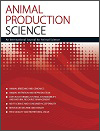Animal Production Science
Volume 64
Number 4 2024
Most vaccines do not confer immediate protection in the host; however, concurrent administration of immune stimulants may enhance or impair immune responses to those vaccines. Bovine respiratory disease (BRD) is costly for Australian cattle and, in this trial, concurrent vaccination against BRD with the stimulant Amplimune was investigated and found to have no detrimental effect on immune responses. These findings warrant further examination of the effect of Amplimune on morbidities and mortalities in feedlots.
Evaluation of carcass component yields is costly and time consuming, thus models for the prediction of broiler carcass yields are useful. Three advanced predictive models were applied to predict carcass component yields, and benchmarked against the classical linear regression. Random forest had the best performance among machine learning methods, suggesting that it may be considered as an alternative to conventional linear models for prediction of carcass yields in broiler chickens. In all of the predictive model tested in this study, inclusion of single-nucleotide polymorphisms as predictor features lowered the predictive performance of the model.
Body-conformation traits in dairy cattle have been associated with health, welfare, and cow longevity, thus affecting herd productivity. The heritability estimates of this study indicated that body-conformations traits could respond to selection. Moreover, the correlations between these traits and milk yield highlighted the importance of considering the correlated response to selection, synergies, and trade-offs between body conformation traits and milk production in Gir cattle. This information is relevant for selective breeding in Gir cattle to enhance tropical milk production.
Bovine mastitis is the disease that causes the most economical losses to dairy farmers, including veterinary expenses, milk disposal, loss of production and reduction of animal pregnancies. The milk composition of mammary quarter affected by mastitis is not the only one compromised, as the milk quality of entire udder is also affected. A period of 20 days is not enough for animals to fully recover from a case of udder inflammation. Mastitis is more costly to producers and industry than has been previously reported.
It is important for those of us responsible for animal welfare and health to improve pig production and avoid economic loss. We used data such as environmental temperature and humidity to determine the best time for a sow to get pregnant with the finest animal-welfare conditions. This information is useful to reduce sow and piglet stress.





